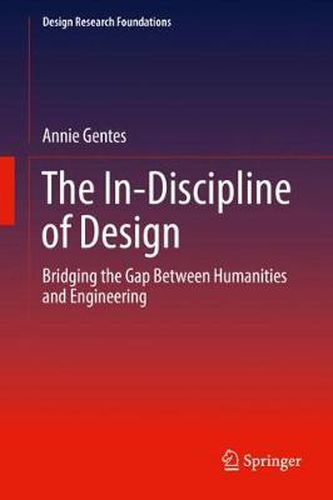Readings Newsletter
Become a Readings Member to make your shopping experience even easier.
Sign in or sign up for free!
You’re not far away from qualifying for FREE standard shipping within Australia
You’ve qualified for FREE standard shipping within Australia
The cart is loading…






Design is a conceptive activity which is usually presented as a sensible, sequential process and action. This book claims that design cannot be reduced to the rational, effective planning and organization that most models (such as design thinking) present. The author suggests another type of rationality which is based on what the humanities call aesthetics, writing, composition, and style: a rationality based in imaginary elaboration and coherence. The chapters, therefore, demonstrate that design practice is about creating not only functional tools, but planes of reflections that challenge norms.
To support this claim, this book analyzes research programs, art works, and design projects that produced new information and communication technologies (ICT). This is detailed using examples in each chapter. From these examples, two types of conclusions are derived: a first level considers the lessons that we can draw from these examples in terms of design practice while the second level starts a theoretical discussion based on these analyses of use cases.
The goal is to develop an understanding of conception in its different forms. This book brings the use of these neglected methods to the foreground as a way to explicate the design process. Taking into consideration the humanities within design contributes to the discussion on pluridisciplinarity. The book posits that design as a historical and situated activity is a truly multidisciplinary endeavor that bridges the gap between engineering sciences and the humanities.
$9.00 standard shipping within Australia
FREE standard shipping within Australia for orders over $100.00
Express & International shipping calculated at checkout
Design is a conceptive activity which is usually presented as a sensible, sequential process and action. This book claims that design cannot be reduced to the rational, effective planning and organization that most models (such as design thinking) present. The author suggests another type of rationality which is based on what the humanities call aesthetics, writing, composition, and style: a rationality based in imaginary elaboration and coherence. The chapters, therefore, demonstrate that design practice is about creating not only functional tools, but planes of reflections that challenge norms.
To support this claim, this book analyzes research programs, art works, and design projects that produced new information and communication technologies (ICT). This is detailed using examples in each chapter. From these examples, two types of conclusions are derived: a first level considers the lessons that we can draw from these examples in terms of design practice while the second level starts a theoretical discussion based on these analyses of use cases.
The goal is to develop an understanding of conception in its different forms. This book brings the use of these neglected methods to the foreground as a way to explicate the design process. Taking into consideration the humanities within design contributes to the discussion on pluridisciplinarity. The book posits that design as a historical and situated activity is a truly multidisciplinary endeavor that bridges the gap between engineering sciences and the humanities.